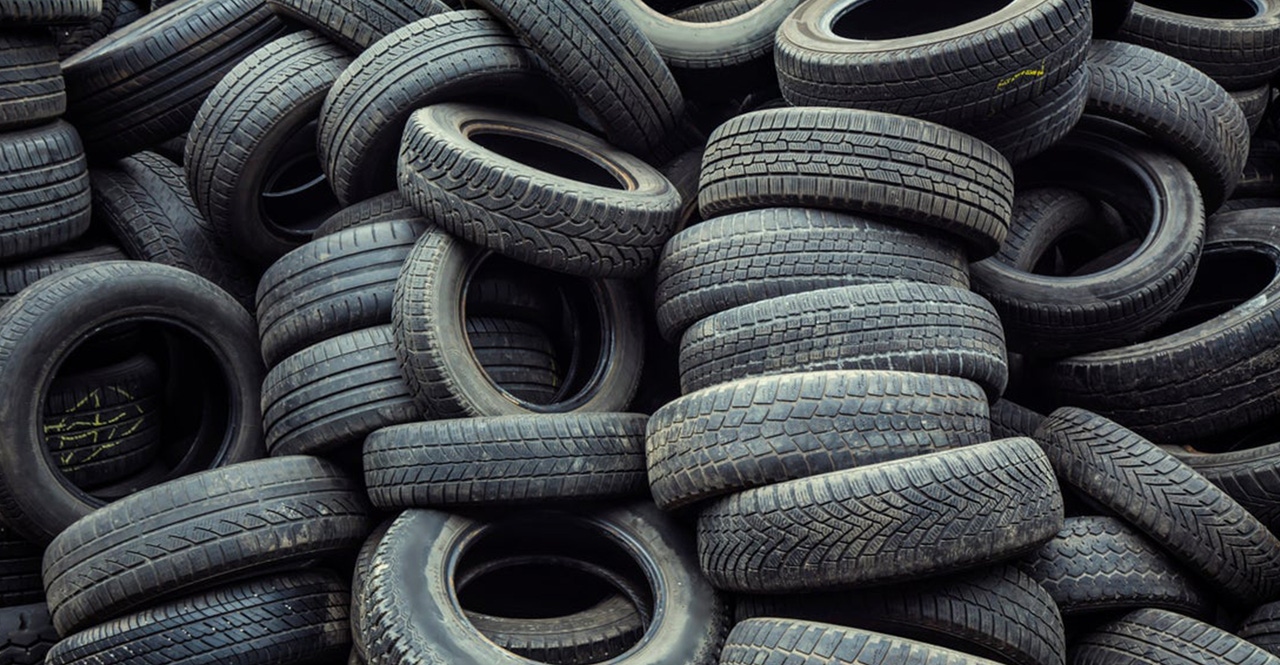Wastefront to Make Products from Old Tires

Wastefront, a Norwegian rubber waste recycling company, has created a process to convert end-of-life tires into liquid hydrocarbons and recovered carbon black in order to make multiple commodities and is especially focused on products to go into recycled tires. It plans to launch its first plant in the Port of Sunderland in 2023.
The company’s process entails extracting the rubber, while removing fiber and steel that bind the tires, and then feeding the shredded tires into pyrolysis and further processing.
Its proprietary pyrolysis process design is the key to the company’s success, says Maria Moraeus Hanssen, chairperson of the Board of Wastefront. Moraeus Hanssen, a veteran of the oil and gas industries, most recently served as Deputy CEO and COO at European oil and gas company, Wintershall Dea.
She elaborates on how pyrolysis, done at high temperatures and in the absence of oxygen, is key to what Wastefront does: “Rubber is made of hydrocarbons, and if you added oxygen you would create carbon dioxide (CO2). But without oxygen you keep the carbon and can further refine the liquid and the solid fractions into different products. This enables you to make multiple commodities,” she says.
The main liquid fractions are distillate, naptha, diesel, and bunker oil. Naptha is especially valuable to the petrochemical industry which makes plastics from it; and bunker oil can be used for larger combustion engines such as those in ships.
Then there is char, which is the solid product resulting from the pyrolysis process. Wastefront plans to mill it to get recovered carbon black— the Holy Grail to get to the tire product.
“Carbon black is one of the most important elements in the process of manufacturing tires. Tires have traditionally been made based on virgin carbon black, but our recovered carbon black is reused to make new tires,” Moraeus Hanssen explains.
The company is focusing largely on providing a sustainable supply to tire manufacturers.
“Tire manufacturers say they want to replace virgin carbon black with recovered carbon black to increase circularity of their manufacturing process. The market is growing fast,” Moraeus Hanssen says.
The process has been tested in existing plants, but taking the business model further will mean having to build, scale, and finetune it.
The company has landed a 10-year offtake agreement with commodity trader Vitol for Wastefront’s liquid hydrocarbon.
“There are sustainability premiums and incentives in place for biofuels and synthetic fuels, and working with Vitol, we will certify our products to be eligible for such incentives,” says Moraeus Hanssen. Wastefront is now finalizing a life cycle analysis to document the carbon footprint of its process.
The company has set its sights on building its first plant in the UK, a region with a strong industrial economy and, consequently, a huge supply of wasted tires.
Wastefront has not signed any firm feedstock supply agreements but is in advanced dialogues with large collectors of end-of-life tires. The operation has secured funding for the ongoing business planning and plant development and plans to ramp up fundraising in Q2 of 2021.
“We have enough money to keep going and have put together a team with a lot of knowledge on pyrolysis leveraged for recycling who can configure the plant. But we still need to build the facility,” Moraeus Hanssen says.
The permitting process is underway for the Sunderland plant, which will be designed to process 220 tons of tire waste a day.
The aim is to install three process lines that run in parallel for optimal uptime including shredders, pyrolysis reactors, distillation towers, and milling machines.
The tire recycler is working to get technology and equipment suppliers lined up and has entered a five-year agreement with Devaltec, an engineering consultancy company specialized in biofuel, synthetic fuel, and waste-to-energy processes that is working on the plant design.
Moraeus Hanssen is optimistic about Wastefront’s future given the potential to create a circular economy for the massive volumes of spent tires.
“Tire waste is a highly under-communicated waste problem. You have about 1.6 billion tires used worldwide each year with about 29 million of them reaching the end of their lives in that timeframe. Meanwhile, about 31 percent is either landfilled, incinerated, or stockpiled. We want to contribute to a solution. For us, it’s both wanting to be part of that solution and seeing a business opportunity. You have all these end-of-life tires with nowhere to go. We will process them in an environmentally conscious way, find a home for the recovered carbon black, and we will make money,” she says.
Vitol trades 8 million barrels per day of crude oil and oil products and trades around 400 million metric tons a year across all oil products.
It will buy over 40,000 metric tons of liquid output from Wastefront, according to Chris Bake, head of Origination, Vitol, who said the company will expand its offtake volumes as Wastefront expands its plant portfolio.
Speaking of the global broker’s motivation, Bake says, “The need for increased production of recycled carbon and advanced fuel is only growing under RED2 [EU’s target for renewable energy sources consumption by 2030]. We are confident there is a growing market and a lack of attractive, technology-derisked projects in that space that we can tap into.”
After Wastefront completes the Sunderland plant, it will plan for a second facility in Europe and then look to build one in the U.S.
“We want to get the first plant going while planning for the next ones. So, we will scale up gradually in size and number of plants,” Moraeus Hanssen says.
About the Author
You May Also Like




